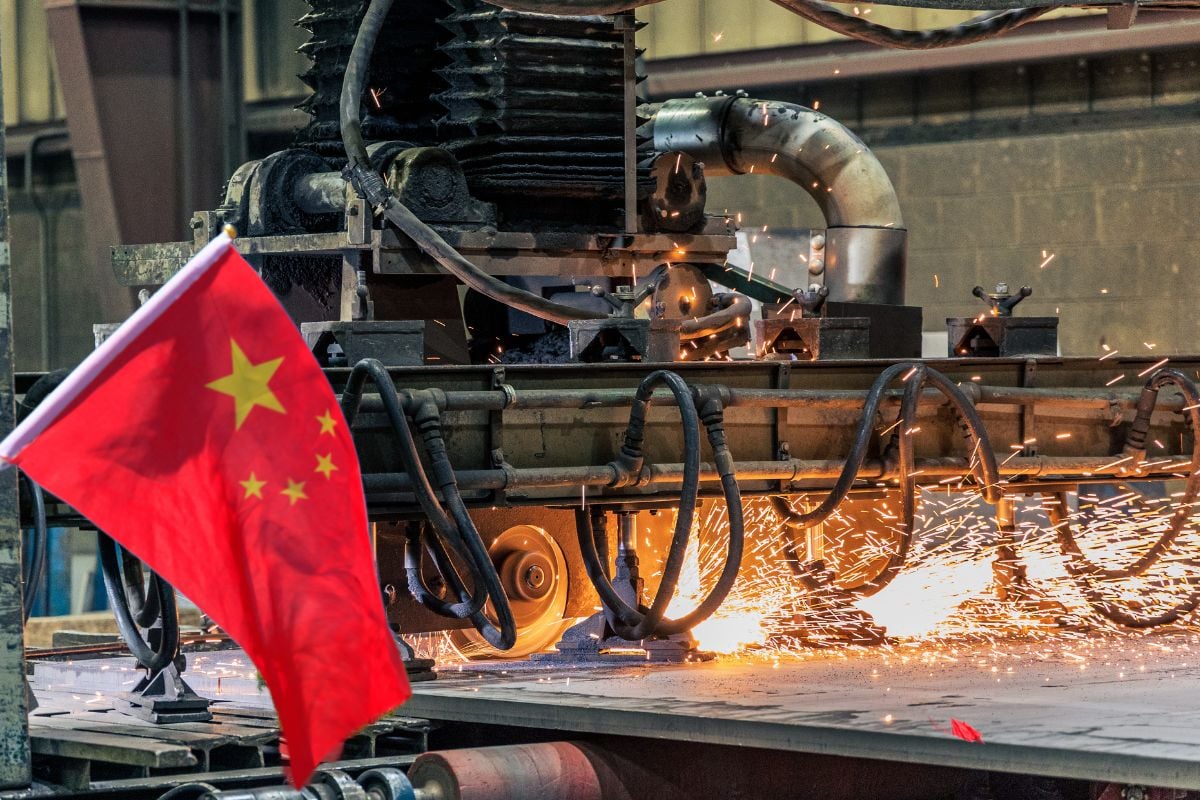A breakthrough that rewrites ironmaking
A radical new process from China is poised to reshape how the world makes iron. After years of intense research, engineers have unveiled a technique dubbed “fusion éclair,” promising a dramatic leap in productivity that could rival the impact of the original Industrial Revolution. It targets the most widely used metal on Earth and offers a step-change in both speed and sustainability.
How “fusion éclair” works
Instead of bulky raw materials, the method feeds a fine iron-ore powder into an ultra-hot reactor. Within moments, a rapid chemical reaction converts the powder into glowing droplets of pure iron, ready for casting or immediate transformation into steel. The concept echoes lab experiments where heat triggers sudden phase changes, but here it’s scaled to an unprecedented industrial level. By replacing slow, multi-stage steps, the process compresses ironmaking into a single, integrated burst.
Ultra-fast by design
Traditional furnaces can take five to six hours to turn ore into metal. “Fusion éclair” does the same in just three to six seconds. That translates to a potential 3,600-fold boost in throughput, pushing output from a steady jog to a full sprint. In manufacturing, shaving minutes is noteworthy—shaving hours is transformative. Such speed promises tighter cycles, lower inventories, and faster responses to volatile demand.
Strategic context and supply realities
China remains the world’s largest consumer of iron ore, importing more than 80% of its needs from Australia and Brazil. Even as raw steel consumption has softened slightly, overall output still eclipses 800 million tons annually—an industrial scale that anchors global supply chains. A domestic process that multiplies productivity could shift pricing power, alter trade flows, and change how the world finances new capacity. For nations reliant on iron-rich exports, the ripple effects could be both economic and political.
Cleaner by construction
One of the most striking claims is the removal of coal from the smelting stage, a major source of steel’s emissions. Cutting coal dramatically reduces CO2, addressing one of heavy industry’s hardest decarbonization problems. Early assessments suggest efficiency gains of more than three quarters, redefining what “green steel” might actually mean. In an era of climate constraints, cleaner ironmaking isn’t a bonus—it’s an imperative. If validated at scale, this could turn a traditionally “dirty” sector into a far cleaner engine of growth.
The engineering behind the leap
To make the process work at industrial scale, researchers developed a high-performance vortex lance that injects up to 450 tons of ore particles per hour. With three such lances, a single reactor could exceed 7.11 million tons of annual iron output. The fluid dynamics are intensive: stable particle flow, uniform heat distribution, and precise reactions must all align in mere seconds. While challenges remain—from refractory wear to control systems—the hardware blueprint signals a serious push beyond pilot scale.
What industry insiders are saying
“This feels like the most consequential step-change in ironmaking since the Bessemer era,” one researcher remarked, “compressing hours of thermal work into a few explosive seconds.”
Why this could be a global pivot
Speed and efficiency alone would be significant, but the strategic implications run even deeper. If China reduces reliance on imports while expanding output, it could stabilize domestic prices, enhance technological sovereignty, and set new global benchmarks. High-speed rail, shipbuilding, and automotive sectors could benefit from faster, cleaner, and potentially cheaper supply. Meanwhile, producers elsewhere may need to accelerate innovation or face a widening competitive gap.
Key facts at a glance
- Three to six seconds per cycle, versus five to six hours traditionally
- Up to 3,600x higher throughput under optimal conditions
- 450 tons/hour injected per lance, using a vortex design
- More than 7.11 million tons of annual output per reactor (with three lances)
- Zero coal in the smelting step, slashing CO2 emissions
- China currently imports over 80% of its iron-ore needs
The road to adoption
Scaling any breakthrough demands proof, patience, and meticulous engineering. Energy sourcing, safety protocols, and feedstock quality will shape the rollout. Integration with existing steelworks will require careful planning to avoid bottlenecks elsewhere in the value chain. Yet the momentum is unmistakable: the promise of high-speed, low-carbon iron is too compelling for the sector to ignore. If “fusion éclair” clears the hurdles of reliability and cost, it could redefine the economics of steel for a generation.
In the end, a faster, cleaner, and more flexible ironmaking pathway would rewire a cornerstone of modern civilization. The world’s most used metal may be on the cusp of its boldest reinvention—one measured not in decades of incremental optimization, but in seconds.

